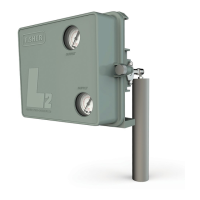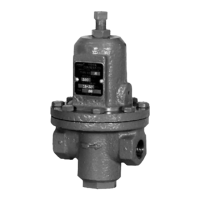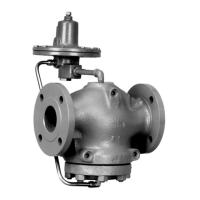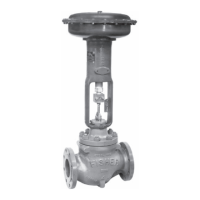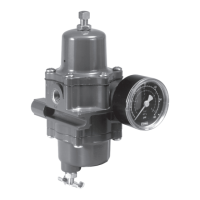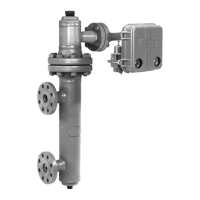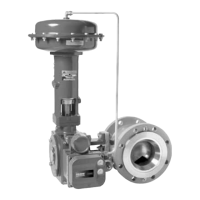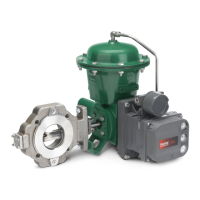4195KA, KB, KC, and KS Controllers
Instruction Manual
Form 5207
April 2007
4-11
SET POINT
INDICATOR
PROCESS POINTER
REMOTE SET POINT
CONNECTED HERE
INPUT ELEMENT
CONNECTED HERE
CONNECTING
LINK
BEAM
FLAPPER
NOZZLE
PROPORTIONAL
BELLOWS
RESET BELLOWS
PROPORTIONAL
BAND ADJUSTMENT
SUPPLY
PRESSURE
RELAY
OUTPUT PRESSURE
TO FINAL CONTROL
ELEMENT
REVERSE ACTION
QUADRANT
FLAPPER
PIVOT
FEEDBACK
LINK
FEEDBACK
MOTION
DIRECT ACTION
QUADRANT
INPUT MOTION
FLAPPER DETAIL
SUPPLY PRESSURE
OUTPUT PRESSURE
NOZZLE PRESSURE
RESET PRESSURE
RELAY
TO
NOZZLE
TO
RESET
BELLOWS
TO
PROPORTIONAL
BELLOWS
SUPPLY
PRESSURE
RESET
VALVE
DIFFERENTIAL
RELIEF VALVE
OUTPUT
PROPORTIONAL-PLUS-RESET CONTROL
PROPORTIONAL-PLUS-RESET CONTROL WITH ANTI-RESET WINDUP
46A9764−C
B1908−4 / IL
RESET
VALVE
Figure 4-5. 4195KB Series Controller Schematic
Pressure in the reset bellows opposes the action of
the proportional bellows and slowly moves the
flapper closer to the nozzle. The result of this
interaction is that, when the process pressure
changes, proportional action temporarily reduces the
gain of the controller for improved stability. The
process pressure then slowly returns to set point, as
pressure in both bellows equalizes via the reset
action.
Moving the set point indicator changes the distance
between the nozzle and flapper as does a change in
process pressure, except that when the set point is
changed, the nozzle moves with respect to the
flapper.
The proportional band adjustment positions the
nozzle on the flapper. Increasing (widening) the
proportional band moves the nozzle to a position on
the flapper where less input and more feedback
motion occurs, which decreases the gain of the
controller. Decreasing (narrowing) the proportional
band moves the nozzle toward a position where
more input and less feedback motion occurs, which
increases the gain. The controller action is changed
from direct to reverse by turning the proportional
band adjustment to position the nozzle on the
flapper quadrant to a point where the direction of the
flapper motion versus input motion is reversed as
shown in the flapper detail of figure 4-5 or 4-6. With
the controller in the reverse-acting mode, an
increase in process pressure causes a decrease in
output pressure.
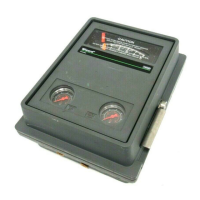
